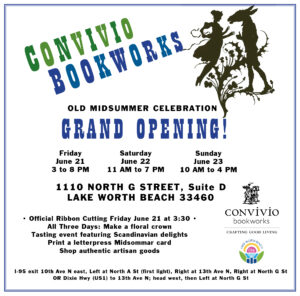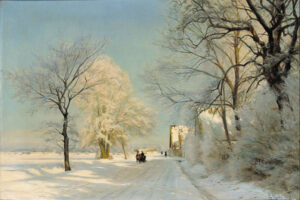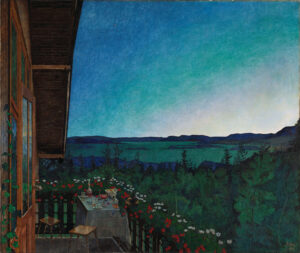So, here we are at the June solstice. The first day of summer in the Northern Hemisphere, and yet, by traditional reckoning of time, a time our ancestors called Midsummer. There is a certain loveliness to the logic in this viewpoint and this nomenclature, for daylight has been increasing on a daily basis since the December solstice, and now, as we reach Midsummer, the pendulum swings back again toward the other direction, and with this passing day, light will begin to decrease. And just as the days that follow the December solstice bring celebratory, magical days, so do the days that follow the June solstice––they’re just not widely honored here in the States, much to our loss. But just as Christmas Eve and Christmas Day follow the Midwinter solstice, so do St. John’s Eve and St. John’s Day follow the Midsummer solstice. Opposite spokes of the Wheel of the Year, designed intentionally to correspond with the Constant Rearrange that comes about naturally through the choreography between the sun and a planet Earth that is tilted 23.5 degrees.
This time around, the more-or-less precise solstice moment here in Lake Worth, which is in US Eastern Daylight Time, is today, Thursday, June 20, at 4:50 PM. And me, I can only apologize for writing so infrequently lately, but all our energies have been focused on getting our new Convivio Bookworks shop. Friday is the grand opening! The Mayor (with her very large scissors, for cutting the ceremonial ribbon) and the Vice-Mayor and several City Commissioners have promised to be here. And since it’s Midsummer, we’ll have a letterpress Glad Midsommar card you can print yourself, and we’ll also teach you how to make a floral crown, and there will be a tasting event featuring many of our Scandinavian specialty foods and beverages. And, of course, great shopping, good music, nice people… I honestly can’t think of anything not to like. And we’ll help you celebrate a proper Midsummer, too.
After the Grand Opening, our plan is for open hours every Saturday from 11 AM to 4 PM. You may also contact us to shop or visit the place by appointment: We’re happy to do so!
JOIN US, PLEASE!
It’s a Midsummer celebration! Official ribbon cutting with City officials on Friday June 21 at 3:30 PM, and we’ll be open all that weekend (Friday June 21 from 3 to 8 PM, Saturday June 22 from 11 AM to 7 PM, and Sunday June 23 from 10 AM to 4 PM) with lots of Midsummer fun. The new shop is at 1110 North G Street, Suite D, Lake Worth Beach, FL 33460. From I-95, exit 10th Avenue North eastbound; make a left at the first traffic signal onto North A Street, then at the first stop sign, turn right onto 13th Avenue North. Cross the railroad tracks and turn right again onto North G Street. We’re a couple blocks down on your left side in a blue-roofed building. Plenty of street parking on G Street and there are a few spots in our little parking lot, too.
SHOP OUR SUMMER SALE… both online and in-store!
At our online catalog right now, you may use discount code BLOSSOM to save $10 on your $85 purchase, plus get free domestic shipping, too. That’s a total savings of $19.50. Spend less than $85 and our flat rate shipping fee of $9.50 applies. CLICK HERE to shop; you know we appreciate your support immensely. And yes, you may use that $10 discount when you visit us in the store, too!


